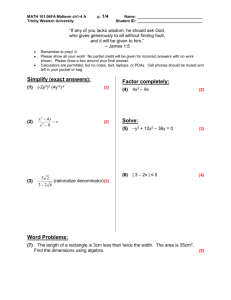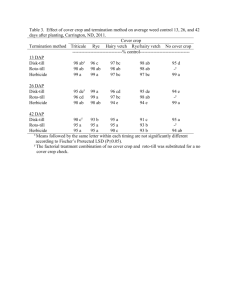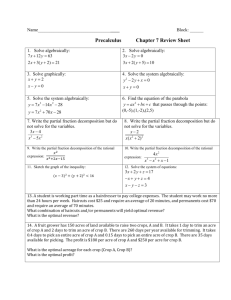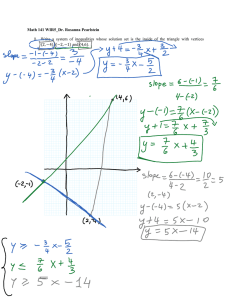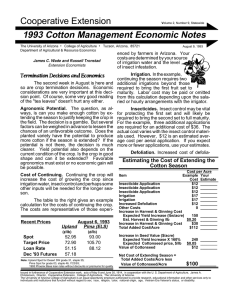Tom Kilcer: Winter Forage Triticale What We Have Learned
advertisement
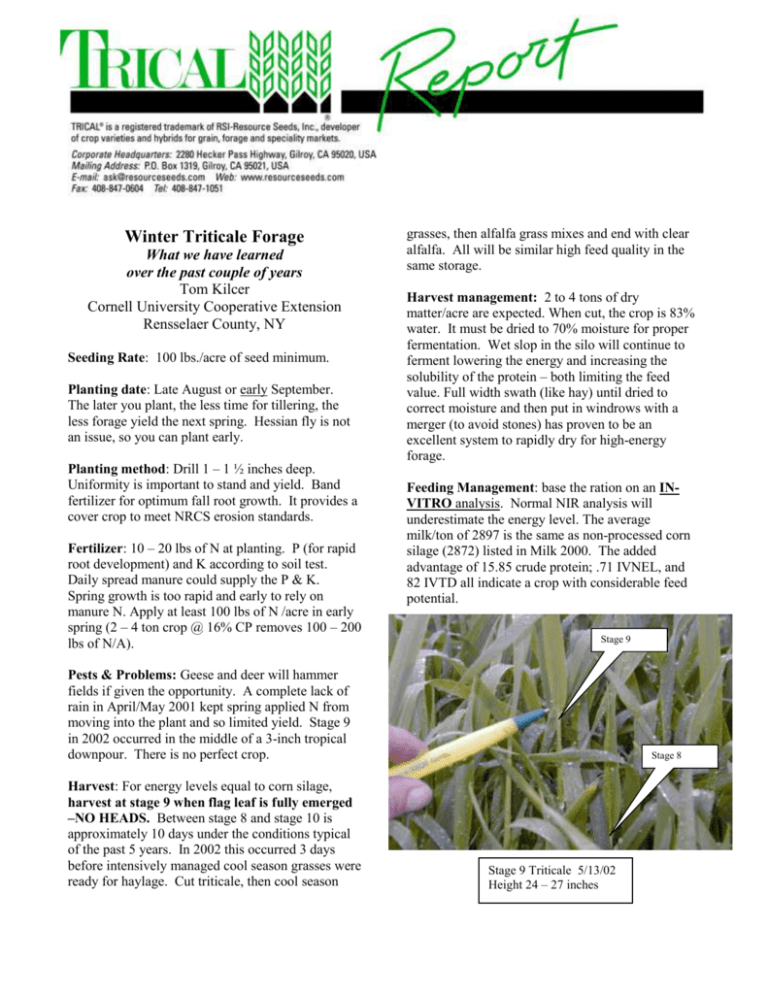
Winter Triticale Forage What we have learned over the past couple of years Tom Kilcer Cornell University Cooperative Extension Rensselaer County, NY Seeding Rate: 100 lbs./acre of seed minimum. Planting date: Late August or early September. The later you plant, the less time for tillering, the less forage yield the next spring. Hessian fly is not an issue, so you can plant early. Planting method: Drill 1 – 1 ½ inches deep. Uniformity is important to stand and yield. Band fertilizer for optimum fall root growth. It provides a cover crop to meet NRCS erosion standards. Fertilizer: 10 – 20 lbs of N at planting. P (for rapid root development) and K according to soil test. Daily spread manure could supply the P & K. Spring growth is too rapid and early to rely on manure N. Apply at least 100 lbs of N /acre in early spring (2 – 4 ton crop @ 16% CP removes 100 – 200 lbs of N/A). grasses, then alfalfa grass mixes and end with clear alfalfa. All will be similar high feed quality in the same storage. Harvest management: 2 to 4 tons of dry matter/acre are expected. When cut, the crop is 83% water. It must be dried to 70% moisture for proper fermentation. Wet slop in the silo will continue to ferment lowering the energy and increasing the solubility of the protein – both limiting the feed value. Full width swath (like hay) until dried to correct moisture and then put in windrows with a merger (to avoid stones) has proven to be an excellent system to rapidly dry for high-energy forage. Feeding Management: base the ration on an INVITRO analysis. Normal NIR analysis will underestimate the energy level. The average milk/ton of 2897 is the same as non-processed corn silage (2872) listed in Milk 2000. The added advantage of 15.85 crude protein; .71 IVNEL, and 82 IVTD all indicate a crop with considerable feed potential. Stage 9 Pests & Problems: Geese and deer will hammer fields if given the opportunity. A complete lack of rain in April/May 2001 kept spring applied N from moving into the plant and so limited yield. Stage 9 in 2002 occurred in the middle of a 3-inch tropical downpour. There is no perfect crop. Harvest: For energy levels equal to corn silage, harvest at stage 9 when flag leaf is fully emerged –NO HEADS. Between stage 8 and stage 10 is approximately 10 days under the conditions typical of the past 5 years. In 2002 this occurred 3 days before intensively managed cool season grasses were ready for haylage. Cut triticale, then cool season Stage 8 Stage 9 Triticale 5/13/02 Height 24 – 27 inches

